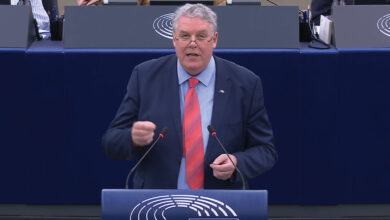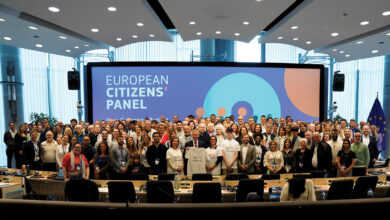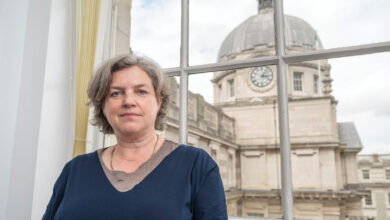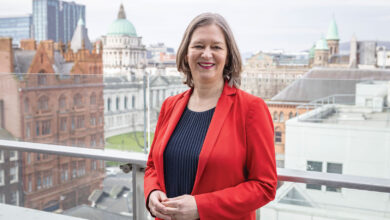Electing a new President
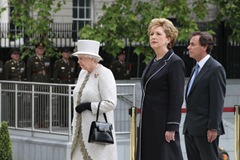 As Mary McAleese prepares to leave office and a new election approaches, Peter Cheney reviews the history and purpose of the presidency.
As Mary McAleese prepares to leave office and a new election approaches, Peter Cheney reviews the history and purpose of the presidency.
The first presidential election in 14 years is essentially a decision on the character and values of the best person to represent Ireland. With minimal political influence, the presidency is designed to stay above the fray and promote the nation’s positives, both at home and abroad.
Mary McAleese is now nearing the end of her maximum term, having been elected in 1997 and returned unopposed in 2004. Polling day is scheduled for 27 October, alongside the referenda on judicial pay and Oireachtas committee powers.
The President of Ireland (Uachtarán na hÉireann) swears to dedicate his or her abilities “to the service and welfare of the people of Ireland” as opposed to the Republic. Presidential duties include
appointing the Government and judiciary, signing bills and commanding the Defence Forces. The President can refer Oireachtas bills to the Supreme Court and decide on dissolving the Dáil when a Taoiseach loses its confidence.
“The actual power of the President is not very great and each President can interpret the role to some degree as they want,” notes Michael Gallagher, a politics professor at Trinity.
A collective vice-presidency, the Presidential Commission, fills vacancies and comprises the Chief Justice plus Dail and Seanad chairmen. It last performed this role from September to November 1997. A separate Council of State advises the President on his or her powers.
Ireland’s presidential history is intertwined with its emergence from British rule. Éamon de Valera held office as President of the Irish Republic from 1919 to 1922. He subsequently served as President of Ireland from 1959 to 1973.
Áras an Uachtaráin was originally the residence of the royal Lord Lieutenant. A Governor-General represented the Crown in the Irish Free State but the position was abolished when Edward VIII abdicated in December 1936. A vacancy followed until the appointment of Douglas Hyde (as the first President under the new Constitution) on 25 June 1938. George VI remained King of Ireland until the Republic of Ireland was declared on 18 April 1949.
The new position was a “republican version of the Governor-General”, according to UCD law professor John O’Dowd, and Hyde was non-partisan. From 1945 to 1990, though, all presidents were Fianna Fáil veterans. Patrick Hillery, O’Dowd notes, carried out similar public engagements to Mary Robinson but hers was the “better story” for the media.
Robinson broke the mould in four ways: a woman, a liberal, outside the ‘civil war’ parties, and an independent (after refusing to rejoin Labour). The office’s budget was boosted and she gave it global profile, meeting the Irish diaspora and becoming the first head of state to visit Somalia during its famine.
With McAleese’s ‘building bridges’ theme, reconciliation with Britain and the North became a high priority. Regular northern visits and tributes to Irish soldiers who served in the British army culminated in the Queen’s state visit.
McAleese’s family was forced out of Belfast during the Troubles but, ironically, she and her husband Martin have a good relationship with loyalist paramilitary leaders. The Áras hosts an annual Twelfth of July garden party. Unionists criticised her comparison of Northern Catholics with Jews in the Holocaust, in 2005, but they generally see her commitment to the peace process as a genuine one.
The President’s popularity has seen her through other controversial episodes. McAleese, for example, spoke in favour of Turkish membership of the EU when visiting the country last year. Fine Gael’s European spokeswoman Lucinda Creighton, who opposed the move, said the remarks were “regrettable” but blamed the Government rather than the President herself.
Candidacy
A presidential candidate must be an Irish citizen, aged 35 or over and be nominated by either 20 Oireachtas members or four county councils. An incumbent President can also nominate himself or herself for a second term.
The winner must give up all other offices, to ensure independence, and must not directly criticise the Government. The 1976 dispute between President Cearbhall Ó Dálaigh and Paddy Donegan over emergency legislation led to Ó Dálaigh’s resignation and confirmed the need for a neutral, respected figure. Robinson and McAleese have usually been tactful, helped by their legal and political experience. That said, Michael Gallagher thinks that too much political experience could be “negative for many voters” in the current climate.
Senator David Norris’ campaign dominated the early stages of the race. At the time of writing, Fine Gael MEP Gay Mitchell and Labour’s Michael D Higgins were the front-runners with entrepreneurs Mary Davis and Seán Gallagher entering as independents.
Mitchell wants to promote a more ethical and responsible society. Higgins emphasises creativity and social justice. Davis has highlighted Ireland as a force for good, drawing on her Special Olympics experience. Gallagher takes a more local view, promoting enterprise to rebuild communities hit by the recession.
Fianna Fáil’s parliamentary party will decide its strategy in early September, with Gay Byrne emerging as its favoured independent. It is understood that the party fears falling behind Sinn Féin if both parties put up candidates. However, a Sinn Féin candidacy is only an outside option as the party cannot nominate a candidate on its own. Several independents are trying to find a successor to Norris, hoping that his or her success would raise their profile. Dana Rosemary Scallon, who polled 175,458 votes in 1997, has limited support in the Oireachtas and would need endorsement from councils.
Several important centenaries will be marked during the forthcoming term, commemorating the Home Rule Crisis, the Easter Rising and the First World War. The new President’s departure from office, in November 2018, may occur on the 100th Armistice Day.
Most aspects of the next presidency will be shaped by the incumbent. While a quiet term may suit a more reserved personality, the public’s expectations are much higher after 21 years of change.
Reforms
Minor reforms to the presidency will be considered by the forthcoming constitutional convention. A seven-year term, firstly, is long by European standards (only Italy and Ireland have it) so a cut to five years will be considered. This would allow for a presidential election to be held alongside local and European polls.
The second proposal is allowing citizens to vote outside the state. If emigrants could vote at embassies, it would follow that Northern nationalists should have their say. This would establish the first all-island election since 1918. Unionists are opposed, citing UK sovereignty. Possible outcomes include postal voting and allowing British citizens to participate: an SDLP suggestion. British citizens in the South can already vote in Dáil elections.

